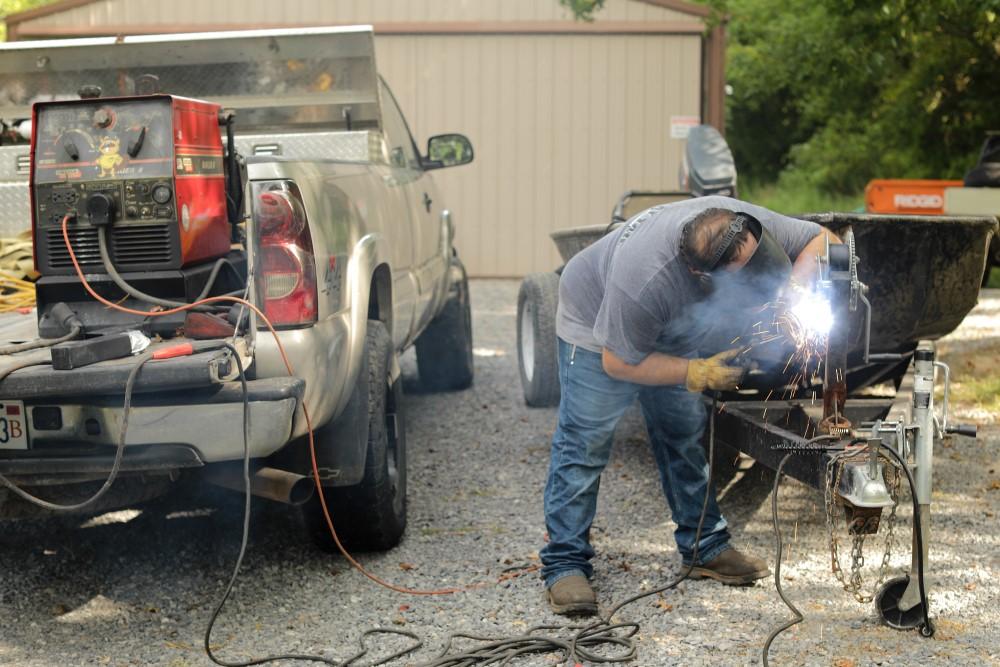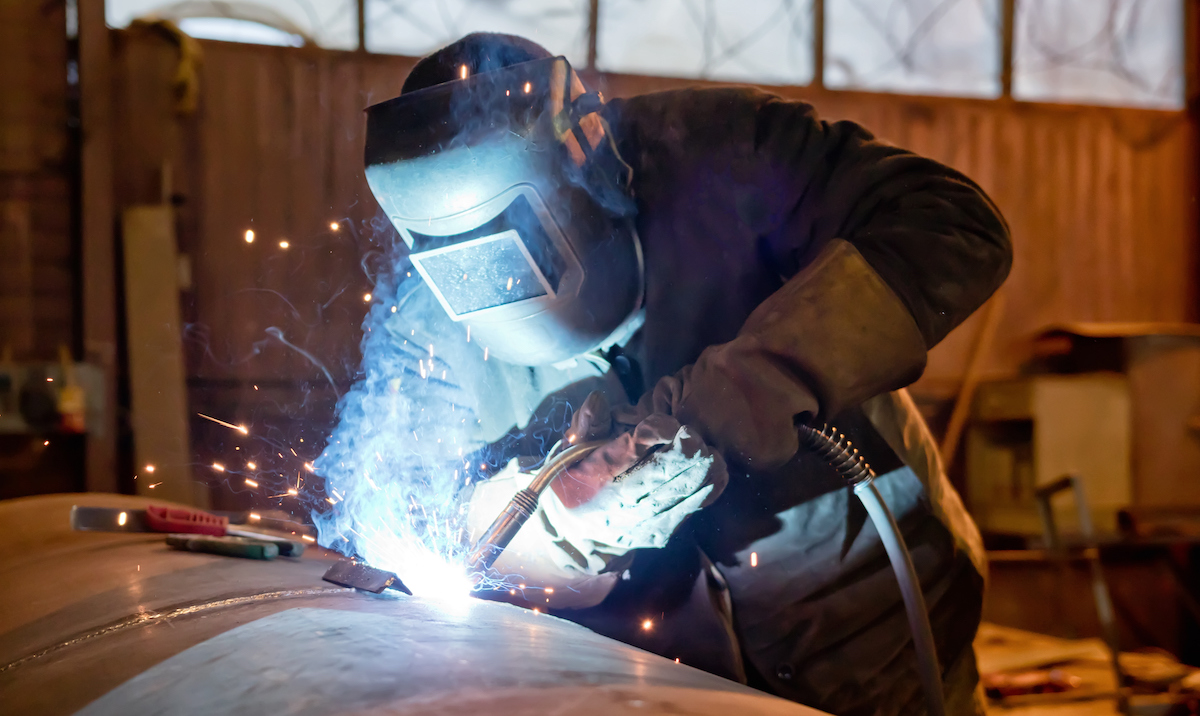Typical Welding Repair Service Issues and Just How to Address Them Efficiently
Welding fixings often come across a variety of problems that can jeopardize the stability of the final product. Usual issues include inadequate infiltration, porosity, and imbalance, among others. Each problem offers one-of-a-kind challenges that need details strategies for resolution. Comprehending these issues is vital for welders aiming to improve their abilities and outcomes. This conversation will explore these typical welding repair work issues and efficient approaches to address them.
Insufficient Penetration
Inadequate infiltration takes place when the weld metal stops working to fully fuse with the base material, resulting in weak joints and potential architectural failures. This problem typically stems from inadequate warmth input, inaccurate electrode angle, or inappropriate welding speed. Welders might run into inadequate penetration as a result of a mistake of the required criteria for a details material thickness or kind. In addition, contamination on the base product's surface can hinder efficient bonding, worsening the issue. To deal with poor penetration, welders should assure appropriate settings on their devices and preserve a tidy work surface area. Normal evaluation of welds is suggested to determine any kind of deficiencies early, enabling prompt adjustments and the avoidance of jeopardized architectural honesty in welded assemblies.
Porosity
Porosity is an usual problem in bonded joints that materializes as small gas bubbles trapped within the weld steel. This flaw can jeopardize the honesty of the weld, causing decreased stamina and possible failing under tension. Fabrication. Porosity usually arises from contamination, dampness, or inappropriate welding techniques, which allow gases to run away right into the liquified weld swimming pool. To address porosity, welders should guarantee proper surface prep work, keep a tidy working atmosphere, and use suitable welding parameters. Furthermore, picking the ideal filler product and securing gas can alleviate gas entrapment. Normal examination and screening of welds can help identify porosity early, guaranteeing timely restorative actions are taken, therefore preserving the top quality and dependability of the bonded structure
Misalignment
Imbalance in welding can develop from various aspects, including incorrect setup and thermal expansion. Recognizing the root causes is crucial for reliable resolution. A number of adjustment methods are readily available to straighten components and assure structural integrity.
Sources of Imbalance
Welding misalignment typically stems from a selection of underlying problems that can endanger architectural honesty. One main reason is improper fit-up of elements prior to welding, which can cause spaces and uneven surface areas. Variants in thermal growth throughout the welding process can additionally lead to distortion, especially if the products being signed up with have various coefficients of growth. Furthermore, insufficient fixturing and clamping might fail to hold elements safely in position, resulting in movement during welding. Improperly maintained tools, consisting of welding makers and devices, may present inconsistencies in the weld bead, additional adding to misalignment. Operator error, stemming from insufficient training or experience, can likewise play a considerable role in creating misaligned welds.

Adjustment Methods Offered
Addressing imbalance effectively needs a mix of restorative techniques tailored to the details problems at hand. One common approach is the usage of components or jigs to hold parts in the proper placement throughout welding, making certain regular placement. Furthermore, preheating the products can assist lower distortion and boost fit-up. For significant imbalance, mechanical realignment methods, such as utilizing hydraulic jacks or clamps, can be used to deal with the position prior to welding. Post-weld warmth therapy might additionally be required to ease stress and anxieties triggered by misalignment. Finally, cautious examination and modification throughout the configuration phase can prevent misalignment issues from becoming substantial troubles, advertising a smoother welding procedure and improving general structural stability.
Distortion
Distortion is an usual challenge in welding that can develop from different elements, consisting of unequal home heating and cooling. Recognizing the causes of distortion is vital for carrying out efficient prevention methods. Resolving this concern not just improves architectural integrity but likewise improves the overall high quality of the weld.
Reasons for Distortion
When subjected to the intense warm of welding, products usually undertake changes that can bring about distortion. This sensation largely arises from thermal expansion and contraction throughout the welding process. As the weld location warms up, the product increases; upon cooling, it acquires, which can produce inner tensions. Additionally, irregular heating throughout a work surface can aggravate these stress and anxieties, causing warping or flexing. The kind of material additionally plays a considerable duty; metals with differing thermal conductivity and coefficients of expansion might respond in a different way, leading to uncertain distortions. Inadequate joint layout and poor fixturing can contribute to misalignment throughout welding, enhancing the probability of distortion. Recognizing these reasons is crucial for efficient welding fixing and avoidance methods.
Prevention Techniques
Efficient avoidance methods for distortion throughout welding focus on managing warmth input and guaranteeing correct joint style. Maintaining More Info a constant warmth input assists to decrease thermal development and contraction, which can lead to distortion. Using strategies such as pre-heating the workpiece can likewise decrease the temperature gradient, promoting consistent heating. Furthermore, picking proper joint designs, such as T-joints or lap joints, can improve security and decrease stress concentrations. Carrying out appropriate fixturing to protect the workpieces in area even more help in maintaining alignment during the welding procedure. Staggered welding series can distribute warmth a lot more evenly, stopping localized distortion. By using these techniques, welders can greatly decrease the probability of distortion and boost the overall high quality of their welds.
Cracking
Cracking is a common issue run into in welding repair work, usually resulting from numerous aspects such as improper cooling prices, material option, or inadequate joint prep work. The incident of cracks can greatly compromise the stability of the weld, resulting in possible failings throughout operation. To resolve this problem, welders should first analyze the root triggers, making sure that materials work and properly chosen for the certain application. In addition, managing the air conditioning rate throughout the welding procedure is crucial; quick air conditioning can cause tension and cause splitting. Appropriate joint layout and prep work also contribute to decreasing the threat. Applying these techniques can boost weld quality and sturdiness, ultimately minimizing the likelihood of breaking in completed weldments.

Incomplete Blend
A significant issue in welding repair services is insufficient blend, which occurs when the weld metal does not adequately bond with the base material or previous weld passes - Montana Mobile Welding and Repair Fabrication. This defect can bring about weak points in the joint, possibly compromising the honesty of the bonded structure. Variables adding to incomplete blend include not enough warmth input, improper welding technique, and contamination of the surfaces being signed up with. To resolve this concern properly, welders should assure proper pre-weld cleansing and surface preparation, as well as readjust their welding criteria to attain sufficient infiltration and fusion. Normal assessment throughout the welding process can additionally help recognize incomplete fusion early, permitting prompt rehabilitative steps to boost the total high quality of the weld
Overheating
While welding fixings can boost structural stability, overheating offers a significant challenge that can bring about material hzxvogen degradation. Too much warm during welding can alter the mechanical buildings of steels, causing lowered strength, boosted brittleness, and bending. This phenomenon is especially important in high-stress applications where structural reliability is vital. Identifying overheating can include aesthetic evaluations for staining or distortion, as well as monitoring temperature level during the welding procedure. To alleviate the threats connected with getting too hot, welders need to employ proper methods, such as managing warm input, readjusting travel rate, and making use of ideal filler products. Additionally, carrying out pre- and post-weld warmth treatments can aid restore product properties and enhance the general top quality of the repair, guaranteeing long-lasting efficiency and safety and security.
Frequently Asked Inquiries
What Are the Usual Indications of a Welding Problem?

How Can I Evaluate My Welds for Top quality?
To check welds for high quality, one can utilize visual examinations, ultrasonic testing, and radiographic techniques. Each strategy guarantees structural stability, identifies issues, and confirms adherence to defined standards, ultimately boosting the integrity of the welded joints.
What Safety and security Precautions Should I Take While Welding?
When welding, one should focus on safety by using appropriate personal protective devices, making certain proper ventilation, safeguarding flammable materials away, maintaining a tidy office, and knowing environments to stop injuries and mishaps.
Can I Fix a Weld Without Redoing the Entire Joint?
Fixing a weld without redoing the whole joint is possible, relying on the damages (Fabrication). Methods such as grinding, adding filler product, or using a welding process can properly attend to specific problems while preserving the surrounding structure
What Tools Are Vital for Reliable Welding Repair Works?
Necessary devices for efficient welding repair work consist of a welding machine, cable brush, mill, safety equipment, clamps, and filler products. Each tool plays a crucial duty in making certain high quality and security throughout the repair process. Porosity usually emerges from contamination, wetness, or incorrect welding strategies, which allow gases to get away into the liquified weld swimming pool. Badly conserved equipment, including welding devices and tools, might introduce incongruities in the weld bead, further adding to imbalance. When subjected to the intense heat of welding, products frequently go through modifications that can lead to distortion. Breaking is a typical concern experienced in welding fixings, commonly resulting from numerous elements such as incorrect cooling prices, product selection, or inadequate joint prep work. A considerable problem in welding fixings is insufficient blend, which happens when the weld metal does not effectively bond with the base material or previous weld passes.